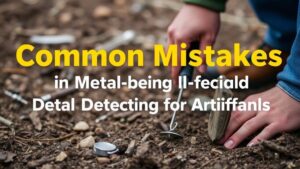Unearthing Coins From Forgotten Hunting Cabins and Campsites
Unearthing Coins From Forgotten Hunting Cabins and Campsites
The practice of metal detecting has gained popularity in recent years, as a mix of technological advancement and curiosity beckons treasure hunters to explore sites laden with history. Among the richest sources for coin collectors and history enthusiasts are forgotten hunting cabins and campsites. These locations provide unique opportunities to uncover relics from past eras, particularly various types of coins that hold historical significance. This article delves into the process, benefits, and techniques involved in unearthing coins from these abandoned sites.
The Historical Significance of Hunting Cabins and Campsites
Hunting cabins and campsites have been essential for hunters, families, and groups seeking adventure in the wilderness. These locations often serve as abode during hunting seasons, providing shelter and a place to gather. Historical anthropological studies suggest that many families used these spots for generations, meaning the ground is potentially rich with artifacts, including coins.
Coins found at these sites can reveal much about the economic conditions, preferences of the individuals camping there, and even validate historical events. For example, a cache of coins from the late 1800s might indicate the presence of miners, tourists, or traders who frequented the area during a pertinent economic boom.
Ideal Locations for Exploration
Finding the right location is key to successful metal detecting. Here are some ideal spots:
- Old camping sites typically frequented by hunters.
- Abandoned hunting lodges where visitors left behind personal items.
- Areas near water sources, as hunters often camped near lakes or rivers.
- Historical trails or roads that led to these sites, often used by hunters traveling to popular spots.
Techniques for Unearthing Coins
To maximize your chances of finding coins in these forgotten locations, employing the right techniques is crucial. Here’s a step-by-step approach:
1. Research the Area
Before heading out, invest time in researching potential sites. Local historical societies or archives can provide maps and documents revealing formerly established hunting areas. Online databases and forums focused on treasure hunting can also be useful.
2. Acquire the Right Equipment
A quality metal detector is vital. Models such as the Minelab Equinox 800 or Garrett AT Pro are popular due to their sensitivity to coin-sized targets. Also, consider bringing a pinpointer for greater accuracy when you locate buried coins and a digging tool to extract them from the ground.
3. Scanning Techniques
When scanning a site, use a systematic grid approach. This method will ensure that you cover the entire area thoroughly without missing potential hotspots where coins might be buried. Pay close attention to areas with disturbed ground, as they often signal past human activity.
4. Understanding Signals
Familiarize yourself with the sounds and signals emitted by your metal detector. Different tones typically signify various types of metals; coins often produce distinct sounds that may vary based on their composition. Practice in your backyard or at known locations to develop your skills.
Legal and Ethical Considerations
While the excitement of finding coins can be thrilling, it’s vital to consider the legal and ethical implications of artifact recovery. It is important to:
- Obtain permission from landowners before exploring private properties.
- Follow local laws regarding metal detecting and artifact recovery–some areas may require permits.
- Abide by the principle of leave no trace, ensuring you record the historical context of your find and avoid disturbing the surroundings unnecessarily.
Real-World Examples of Successful Finds
Stories from avid treasure hunters provide insight into the potential of overlooked sites. For example, a hunter in the Midwest discovered a cache of Indian Head pennies hidden within a storied hunting cabin that dated back to the early 1900s. This find not only enriched his collection but also illuminated the economic conditions of the time, revealing the purchasing habits of those who used the cabin.
In another example, a metal detectorist uncovered a set of silver coins at an old campsite in the Appalachian Mountains. coins, linked to a historical logging family, enhanced the narrative of the area’s economic activity and social structure during the early 20th century.
Actionable Takeaways
Unearthing coins from forgotten hunting cabins and campsites can be a rewarding endeavor for both collectors and historians. To efficiently explore these sites, it is essential to conduct thorough research, employ the right metal detecting techniques, adhere to legal considerations, and appreciate the historical context of your finds. By doing so, hobbyists can not only enrich their personal collections but also contribute valuable insights into the history of the areas they explore.
With persistence and passion, the field of metal detecting can transform a simple outing into a fascinating journey through time.


